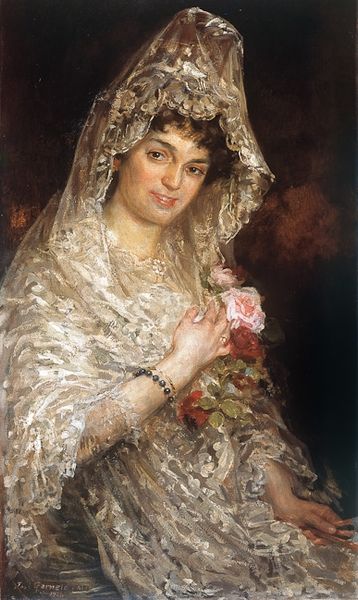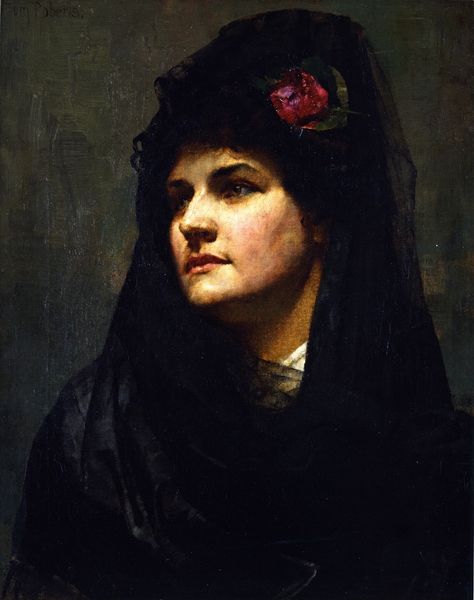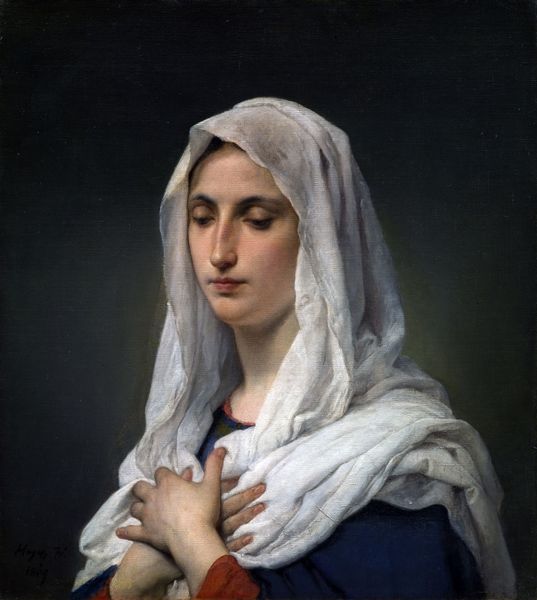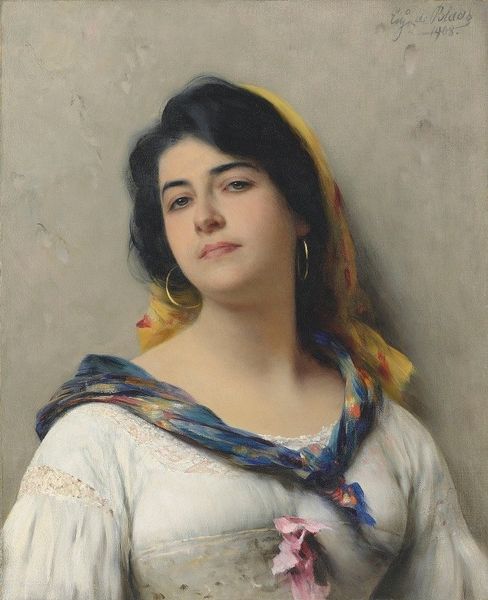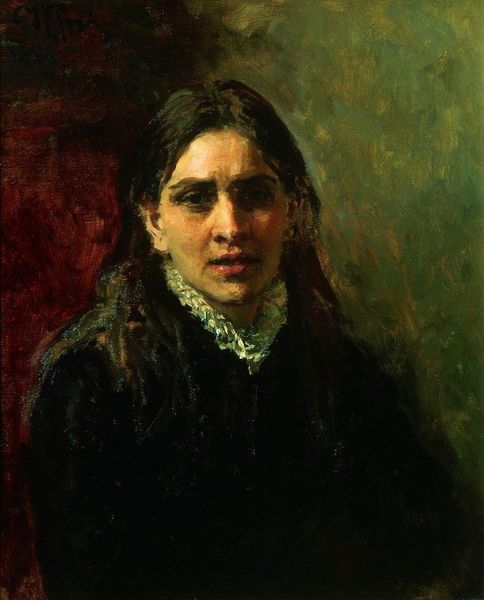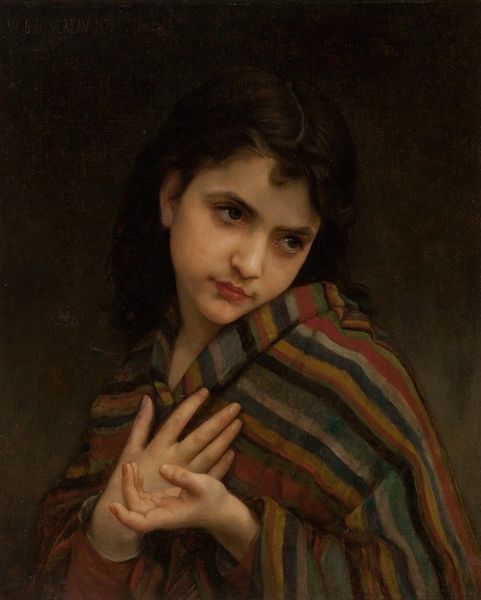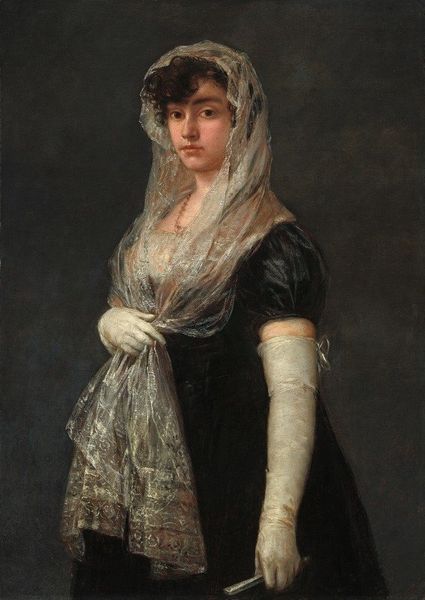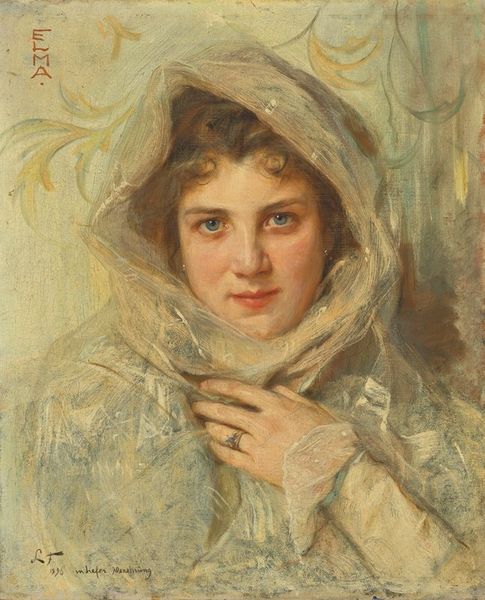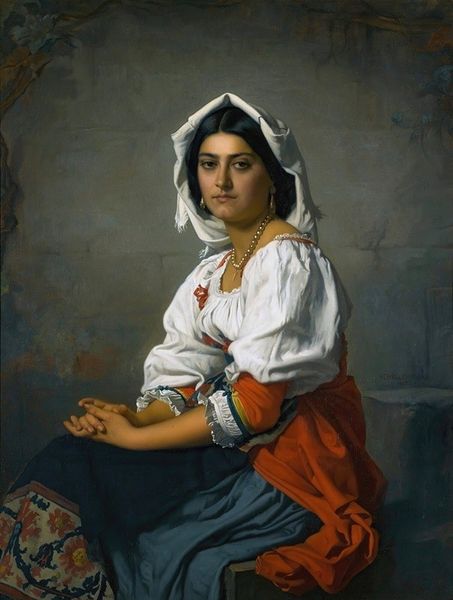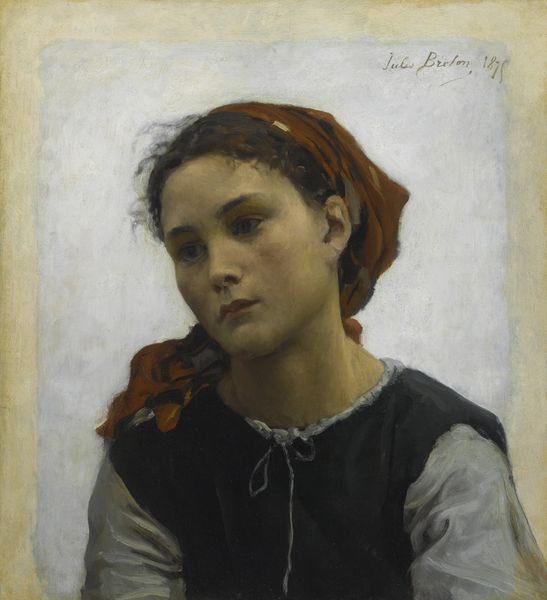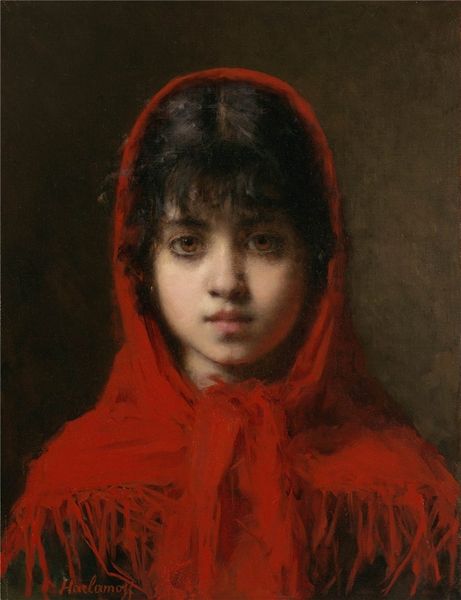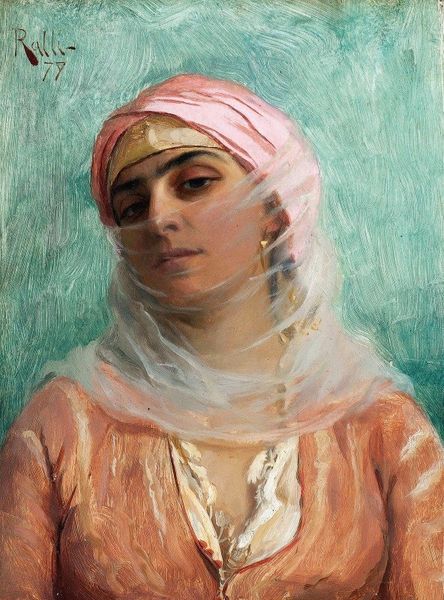
painting, oil-paint
#
portrait
#
painting
#
impressionism
#
oil-paint
#
intimism
Copyright: Public Domain: Artvee
Curator: What a quietly compelling portrait. I am immediately drawn to the textural contrast Renoir achieves. Editor: Indeed. Today, we’re observing Pierre-Auguste Renoir's oil on canvas painting, “Lise in a White Shawl,” dating from approximately 1872. I’m particularly intrigued by how this intimate depiction of his then-muse captures nuances of both the personal and social context of its time. Curator: I see how the shawl almost becomes a halo, framing her face with such delicate detail, while the dress dissolves into dark, almost amorphous strokes. The interplay of light and shadow gives her figure a sense of sculptural presence. Editor: Notice also the significance of the shawl itself – the means and process by which this labor-intensive garment was produced, it's social currency. Her presentation tells us something about class, aspirations, and perhaps the relationship between artist and model, given that Lise was likely integral to his artistic practice. Curator: A striking example of impressionistic technique lies in the face itself – observe the juxtaposition of pure color tones; the subtle pinks, yellows and blues creating form through reflected light. He’s broken down form to these fleeting touches, yet it retains such palpable realism. Editor: Yet, what do you read in the subdued color palette beyond formal concerns? The darker shades in her dress and backdrop create a quietness, almost as if echoing the domestic spaces women occupied in society. Also, notice how her gaze doesn’t directly meet the viewer’s. This adds to the air of introspection – an insight into Renoir’s evolving recognition of gendered environments. Curator: Perhaps... or simply his intent on portraying the softness of personality over rigid structure. The overall tone, it seems, is more tender and engaging than one mired solely in the weight of societal burdens. The harmony suggests an appreciation. Editor: Possibly both readings can coexist here. Ultimately, contemplating this portrait brings forward many ideas. Curator: Absolutely; thank you for this informative perspective. Editor: My pleasure. I learned a lot from you as well.
Comments
No comments
Be the first to comment and join the conversation on the ultimate creative platform.
